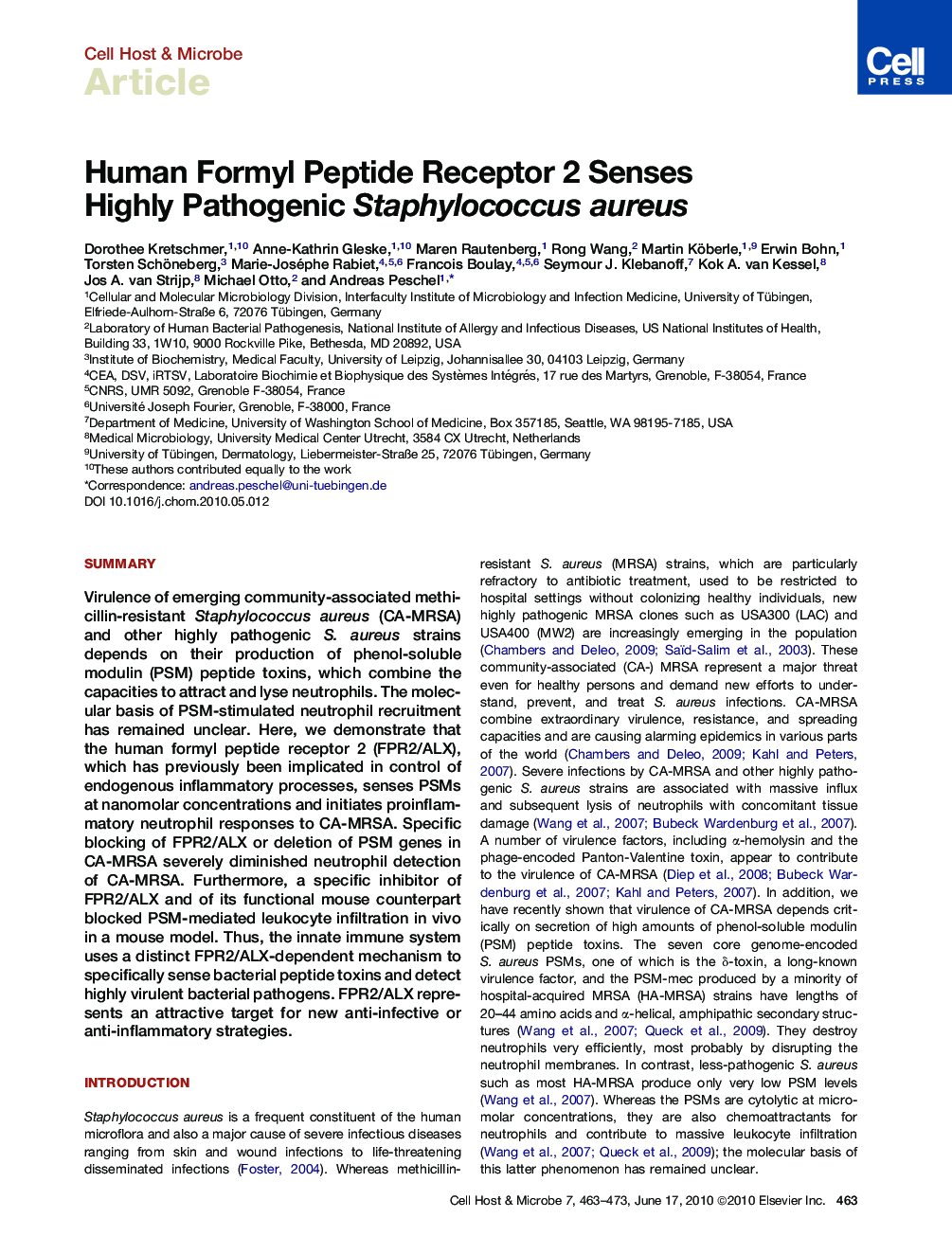| Article ID | Journal | Published Year | Pages | File Type |
|---|---|---|---|---|
| 4361403 | Cell Host & Microbe | 2010 | 11 Pages |
SummaryVirulence of emerging community-associated methicillin-resistant Staphylococcus aureus (CA-MRSA) and other highly pathogenic S. aureus strains depends on their production of phenol-soluble modulin (PSM) peptide toxins, which combine the capacities to attract and lyse neutrophils. The molecular basis of PSM-stimulated neutrophil recruitment has remained unclear. Here, we demonstrate that the human formyl peptide receptor 2 (FPR2/ALX), which has previously been implicated in control of endogenous inflammatory processes, senses PSMs at nanomolar concentrations and initiates proinflammatory neutrophil responses to CA-MRSA. Specific blocking of FPR2/ALX or deletion of PSM genes in CA-MRSA severely diminished neutrophil detection of CA-MRSA. Furthermore, a specific inhibitor of FPR2/ALX and of its functional mouse counterpart blocked PSM-mediated leukocyte infiltration in vivo in a mouse model. Thus, the innate immune system uses a distinct FPR2/ALX-dependent mechanism to specifically sense bacterial peptide toxins and detect highly virulent bacterial pathogens. FPR2/ALX represents an attractive target for new anti-infective or anti-inflammatory strategies.
► Highly virulent S. aureus strains produce PSM toxins ► PSMs attract human neutrophils in the nano- to micromolar range ► PSMs are specifically sensed by the human receptor FPR2/ALX ► Innate immunity includes FPR2/ALX-mediated discrimination of highly virulent bacteria
